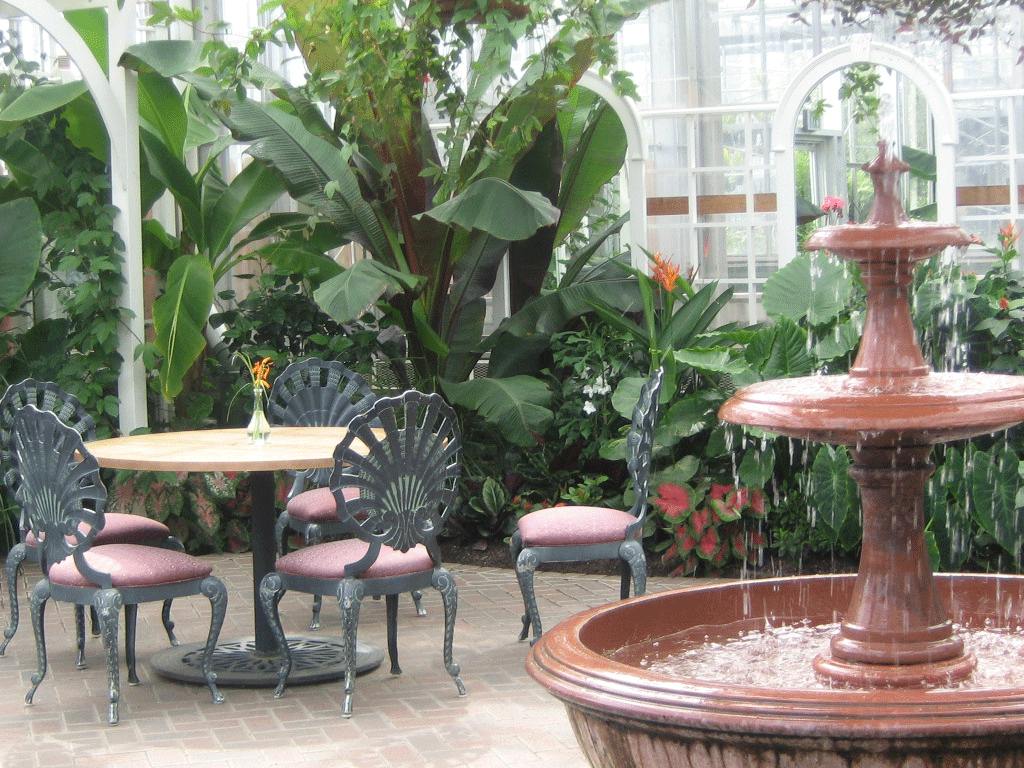P. Pilgrim
One of the seven wonders of the ancient world was the Hanging Gardens of Babylon. They were believed to have been built around 600 BC by King Nebuchadnezzar II for his Median wife, Queen Amytis, because she missed the green, flowing gardens of her home. The city of Babylon was situated in the deserts of modern-day Iraq which has caused much speculation as to how an elaborate and lush garden could have been created and have survived in the dryness of the desert. Some accounts and poetic descriptions of the gardens suggest that it was an elaborate series of rooftop gardens while another theory says that the gardens were built in the walls of the royal palace. One report says the King erected very high walls, supported by stone pillars; and by planting what was called a pensile (or hanging) paradise, with an ascending series of tiered gardens containing a wide variety of trees, shrubs, and vines, rendering the prospect an exact resemblance of a mountainous country the aspect of which the Queen missed from her home country. Recent excavations have suggested the use of an exceptional system of irrigation using a cellar well in conjunction with a chain pump to raise the water to the gardens. Although, the account of Strabo, a Greek historian from 64 BC – 21 AD, possibly based his description of the gardens on the lost account of Onesicritus from the 4th century BC. He states that the gardens were watered by means of an Archimedes’ screw leading to the gardens from the Euphrates river. Archimedes screw is a machine for raising water, allegedly invented by the ancient Greek scientist Archimedes. One form consists of a circular pipe enclosing a helix and inclined at an angle of about 45 degrees to the horizontal with its lower end dipped in the water; rotation of the device causes the water to rise in the pipe. Hence, they were able to bring water to the top and using the force of gravity, to water the individual rooftops, terraces and walls with the hanging plants. The Archimedes screw is still used today in water treatment facilities for circulating the water. Nonetheless, it would have been a mammoth engineering feat. Sadly, the gardens were believed destroyed by earthquake in 226 BC so all the commentaries are not personal witnesses and this has caused some to wonder whether the gardens existed at all. There are many records from the time of King Nebuchadnezzar II but no preserved Babylonian writings from that time period mention the gardens. Thus, scholars today only speculate whether they existed, and how they might have appeared, based on historians who later quoted eyewitness accounts.
Although the Bible often mentions King Nebuchadnezzar it doesn’t mention the hanging gardens either. Though it does speak of beautiful flourishing gardens and it reminds us of the germinating power of the soil, “For as the earth bringeth forth her bud, and as the garden causeth the things that are sown in it to spring forth; so the Lord GOD will cause righteousness and praise to spring forth before all the nations,” Isaiah 61 verse11. This verse uses the metaphor of a bountiful garden and compares it to how God will cause his righteous people to grow in all nations. The righteous is a title for those who have trusted Christ and been clothed in the robe of righteousness given by Christ. As it says in the previous verse, “I will greatly rejoice in the LORD, my soul shall be joyful in my God; for he hath clothed me with the garments of salvation, he hath covered me with the robe of righteousness, as a bridegroom decketh himself with ornaments, and as a bride adorneth herself with her jewels. These people will appear like the spring flowers that clothe the hills and valleys throughout the world in beauty and vibrancy.
pilgrimway101@yahoo.com




